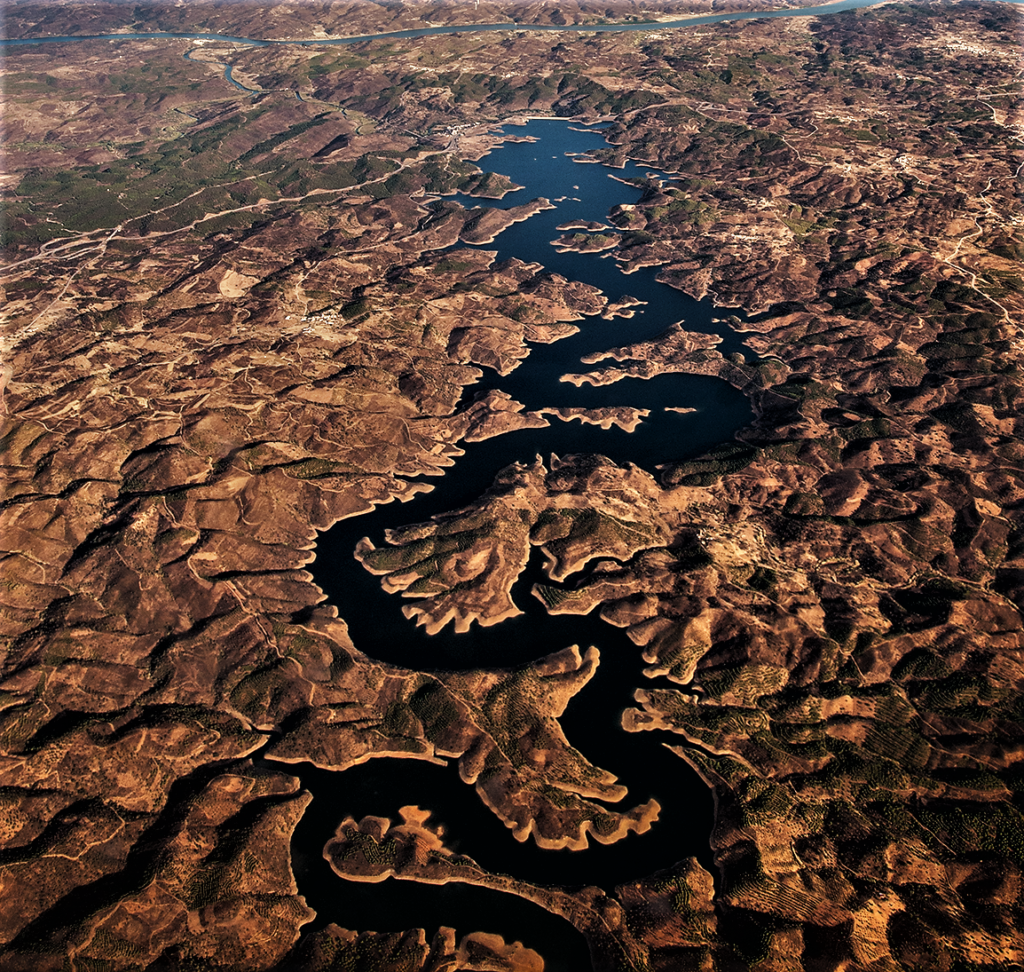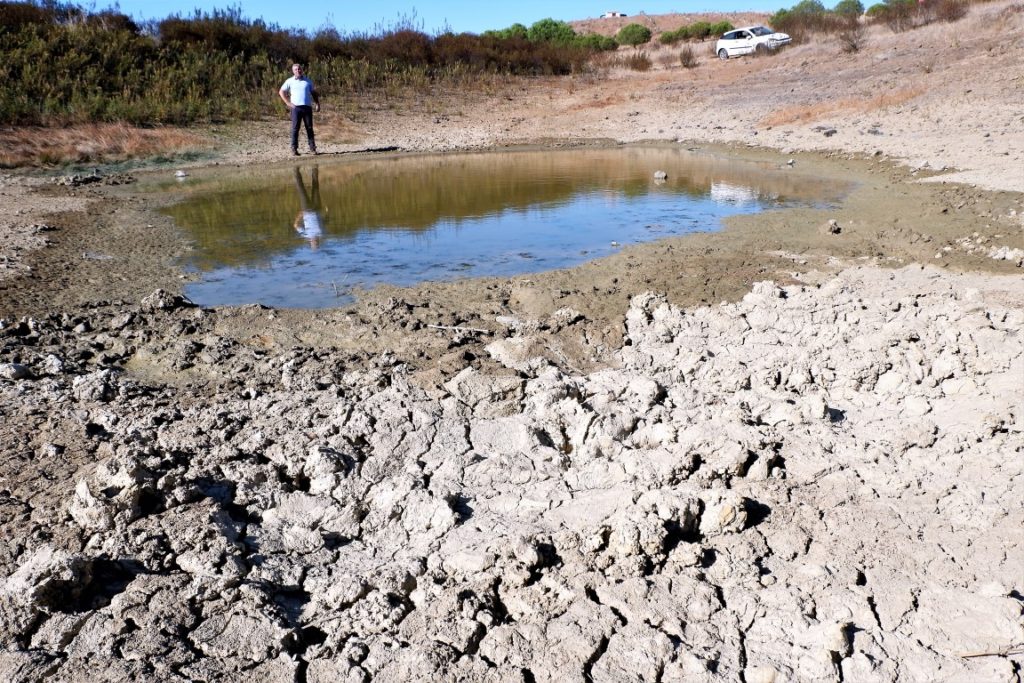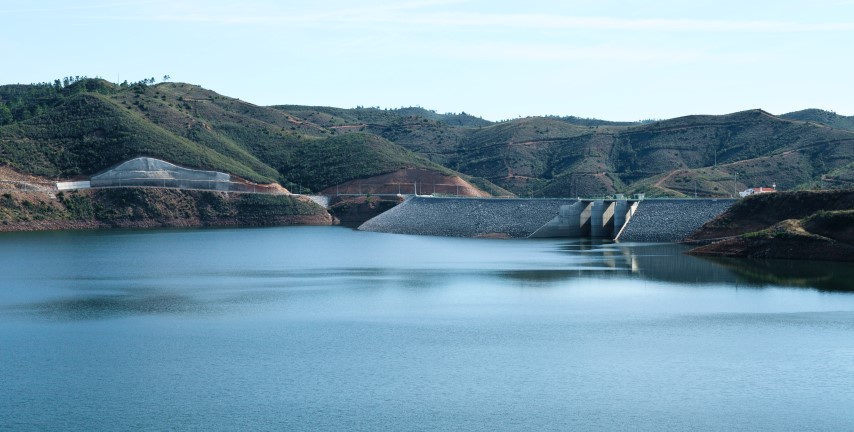
Many look at the dams in the Algarve and see them half full. But there are also those who look at them and think they are already half empty. The drought has settled in the vast majority of the national territory and has already reached the Algarve, which has been experiencing a year of very low rainfall. Even so, there is a lot of stored water, which leads Águas do Algarve, municipalities and even irrigation associations not to show much concern about the situation.
The dominant message is that the people of the Algarve can rest easy, as, in 2018, water will continue to flow out of the taps and into the fields within the irrigation perimeters, even if the rain is reluctant to fall. But there are those who are not so easily reassured. “The only thing that could reassure me was if it rained substantially and normally. Otherwise, nothing will leave me at ease," he told the Sul Informação Fernando Severino, Algarve Regional Director of Agriculture and Fisheries.
DRAPAlg sees water in dams, but also registers the decrease in water available in groundwater and the lack of this good in some parts of the region, namely the northeast of the Algarve.
«What is happening is that we are in the season that should be the autumn and winter sowings, and even some natural regeneration. If it doesn't rain, it becomes a problem for the whole Algarve and for dryland crops and livestock. There is a lowering of the holes that inspires some concern, but always in the hope that it will rain. But we are very much awake in relation to the measures that need to be taken», said Fernando Severino.
“If this continues, within a year we could have problems. And, in the Northeast of Algarve, we are already feeling them. In terms of dams, the Arade is the one that is the lowest. All others are at a level that guarantees agriculture. And the situation of the holes is still not alarming. But there are signs of decline, as it does not rain," he explained, on the sidelines of a session where the "Medidas Drought 2017" were released in Alcoutim.
O Sul Informação went to the field and verified on-site visit the problems that goat and fruit growers in this part of the Algarve are experiencing.

The area to the north of the Odeleite Dam, which is even one of the fullest in the country, is where the effects of the drought are most noticeable. In part, this is because the Odeleite irrigation perimeter only reaches farmers with farms downstream of the reservoir, located in the municipality of Castro Marim.
In other parts of the Algarve, namely in Barlavento, there is still no cause for alarm, in the view of José Correia, the engineer responsible for the irrigation sector at the Association of Irrigants of Silves, Lagoa and Portimão.
According to the official, the Arade dam "has enough water to guarantee the current campaign" and there is also the Funcho dam, "which is full and has water for another two years, even if it doesn't rain at all," he said.
Official data from the National Water Resources Information System reveal that, in October, the Arade reservoir had a total load of 18,2%. The Funcho dam was at 72,3% and Bravura at 51,3%. In the Barlavento Algarvio, there is a fourth dam, that of Odelouca, whose water is exclusively intended for human consumption.
“Right now, we don't have a water problem in our irrigation perimeter,” said José Correia. But, at the limit, that is, if it has not rained for more than two years, measures may have to be taken. "The first to suffer cuts are annual crops, such as rice, which there are some, as happened in 2005. Then, depending on the severity, other measures will have to be taken," he said.
Also from Águas do Algarve comes the guarantee that the water that is currently stored in the dams is sufficient, in the short/medium term. «We can say – and rest people – that we will have water to supply the population, also next year, even if it doesn't rain», guaranteed Teresa Fernandes, company spokesperson.
“The Odeleite and Beliche dams, both multipurpose [human supply and irrigation], are doing very well, at around 70%. We also have the Odelouca Dam and underground catchments. Right now, and although rainfall has been reduced this past year, we have been storing about 50 percent more water than in the same period last year. This has to do with the large investments that Águas do Algarve has made in the region to prevent these situations of prolonged drought», he framed.
In this case, the situation is quite different in Barlavento and Sotavento. According to Águas do Algarve on its website (data from November 3rd), the Odelouca dam (Silves) has a total load of 37,67% and a payload of 23,59% - a year earlier it was to 42,48%/29,49%, respectively.
The Odeleite dam, which despite having a lower capacity than that of Odelouca, also withstands a high load, is at 70,02% of total load (64,18% useful). The Beliche, which is much smaller than its counterparts, has 61,99%/57,46% of total/useful load. In these two dams, there was, in fact, a considerable growth in stored water, from October 2016 to the same month in 2017, of values in the order of 40 and 35 percent (total load) for the current ones.
Teresa Fernandes reassured the population, but did not fail to warn that "this is not why people should use water carelessly and waste it".
“Even though water is available and sufficient to supply the region, it is important that people are aware that this is an increasingly scarce resource, which we must use sparingly and intelligently. And it's not just now, but also when it rains», he said.
For that to happen, Águas do Algarve has been focusing on campaigns. «Some, those aimed at the general public, have more visibility, like the one we did last year, in summer, on all Algarve beaches. But there are also some that are not so publicized in the media», he assured.
“We have thousands of kids who come to our facilities every year, where we make a big investment in raising awareness about the efficient use of water. We are sure that they take this information home and the results have been very positive», added the spokeswoman for Águas do Algarve.
As for the choices made in the Algarve in terms of species used in public and private gardens, in many cases not adapted to our climate and, as such, authentic water sinks, a topic that is increasingly on the agenda, Teresa Fernandes says that pass a lot through the conscience of each one. “We raise awareness more focused on consumption in our homes. We want people to consume responsibly. Therefore, if we are aware that we are in a period of drought, it is part of each one of us to know what to do and to be responsible for their actions», he defended.

Convincing people to use water in a more civic way is the main objective of the «permanent campaign» that, according to Secretary of State for the Environment Carlos Martins, the Government has launched. “We are going to have two types of campaign. One begins now, in paper-based media, with radio spots and a message on RTP, relating to the critical situation we are experiencing. But after that, we want to reinforce the message, so that people internalize water-saving behaviors. It is a matter of citizenship and respect for a good essential to life», said the member of Government, in an interview with Antena 1.
On the same occasion, the government official stressed that the example must start with the public sector, which will have to work to avoid waste, whether in the supply networks themselves, or in the daily use of this good. After all, it is not uncommon to see irrigation systems in public gardens that are more successful on sidewalks and roads than on the green space itself.
In statements to the Sul Informação, Jorge Botelho, president of AMAL – Algarve Intermunicipal Community, guaranteed that the Algarve's municipalities have «always have water-saving contingency plans», which are applied when necessary. “We also transport this asset to our communities. In Tavira, we take water to a series of hills to supply the deposits, because the holes don't have water», he assured.
Jorge Botelho defended, on the other hand, that everything has to «be framed with the rainfall year we had last year». "Much of the territory is in severe drought, but at this time, last year, there had to be discharges from the Odeleite and Beliche Dams, because it rained a lot," he recalled.
«Right now, according to information given at the Águas do Algarve General Meeting, we are above the quota for the previous year. It rained a lot here in Sotavento and transfers are being made to Barlavento, where there was less rainfall,” he added.
Even so, the situation is “serious, although the activation of a contingency and emergency plan is not foreseen for the time being, as things are still working and there are reserves”.
But "if the drought gets worse, there will surely be a restrictive plan for supplying and cutting irrigation, which we hope will not happen."
Meanwhile, autumn wears off and winter is just around the corner, with no sign of the «substantial and normal» rain desired by Fernando Severino. But this does not shake the prevailing optimism or trigger the desire to bring to the region the discussion that is already taking place at national level about public and private water waste, whether in municipal irrigation systems that supply water to the asphalt, or in abundantly watered backyards when the sun is at its peak.


















Comments